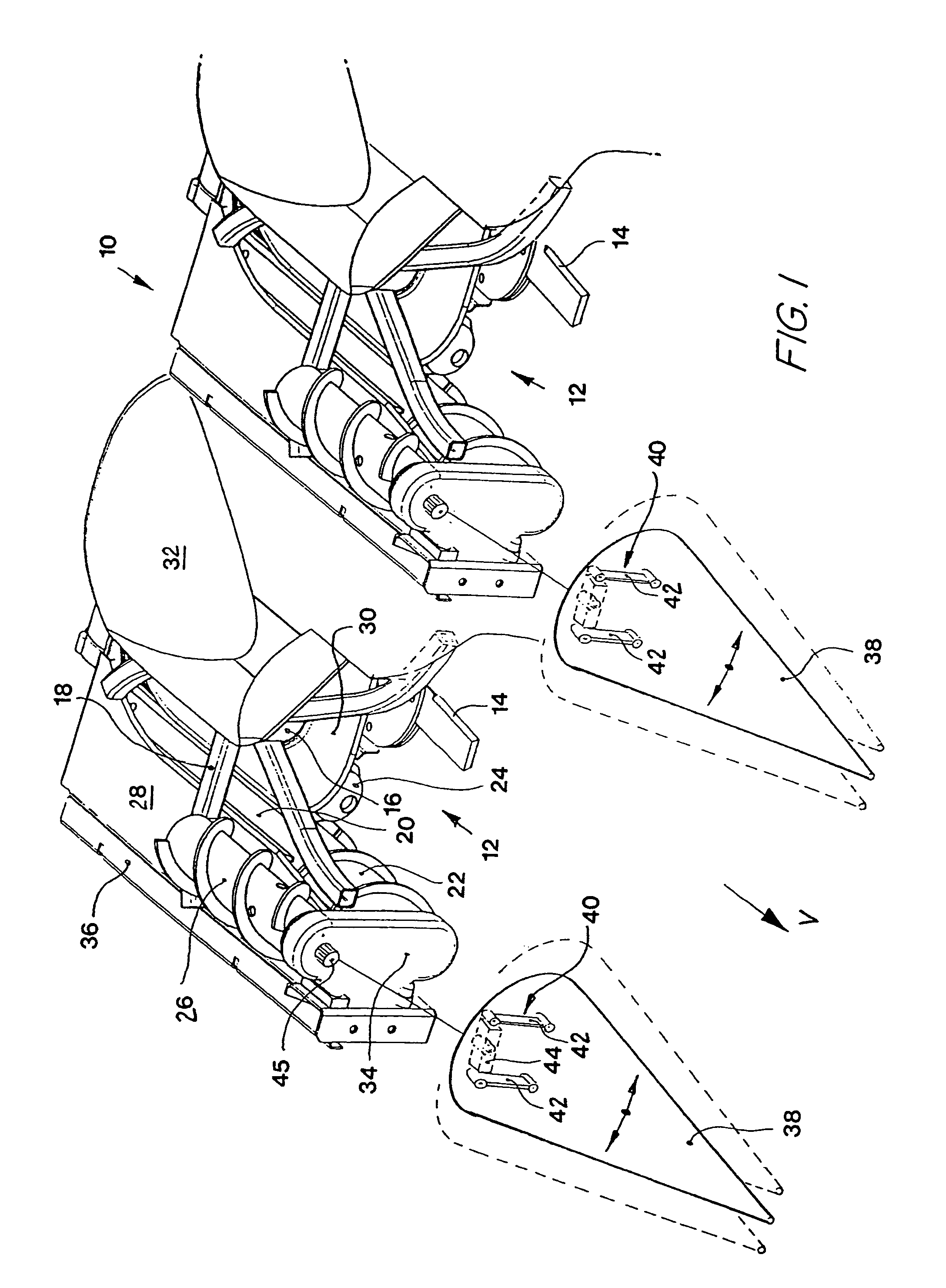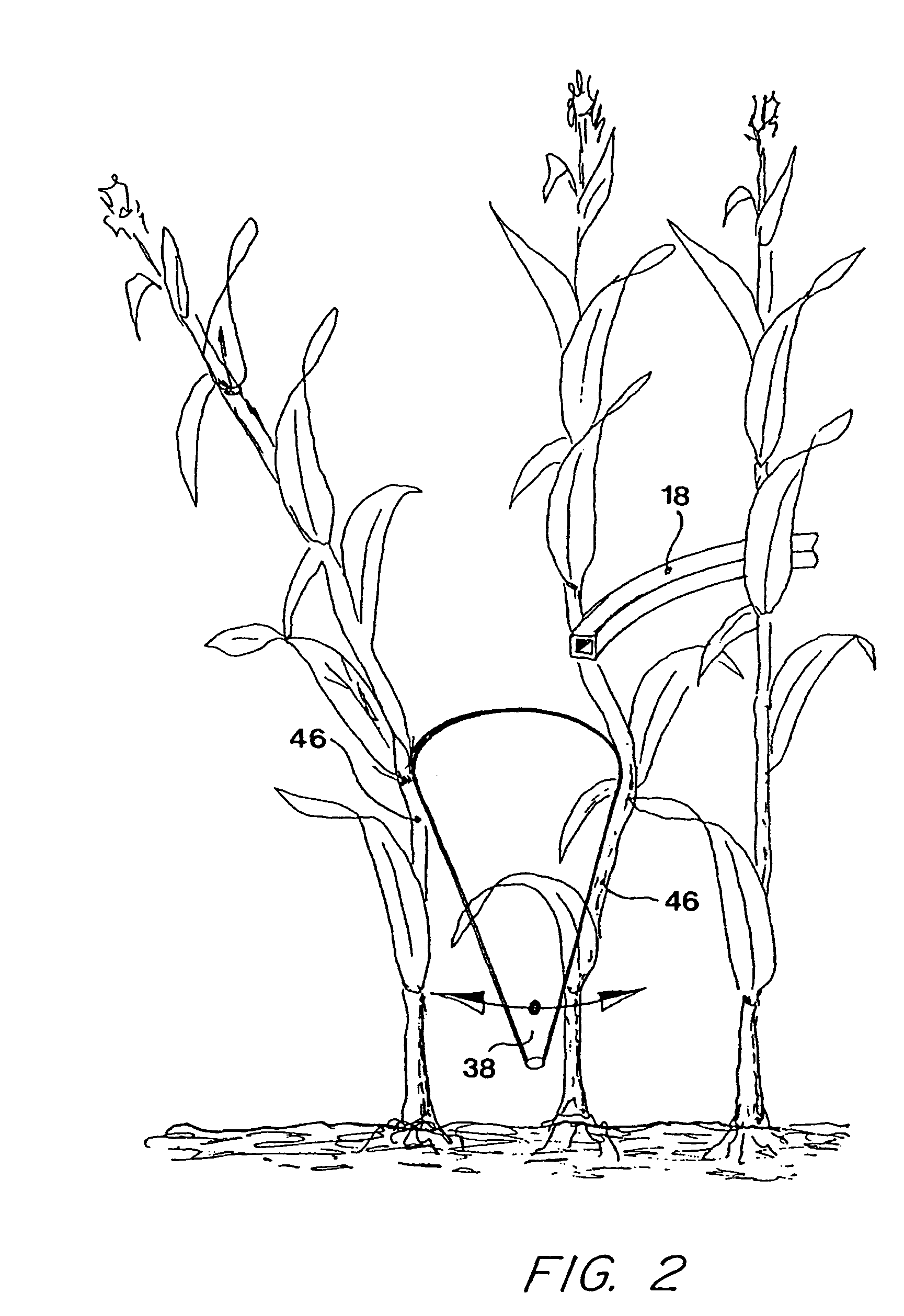Harvesting implement for harvesting stalk-like plants
a technology of harvesting implements and stalks, applied in the field of harvesting implements for stalklike plants, can solve the problems of undesirable losses, inability to solve, and above-mentioned problems, and achieve the effect of reducing undesirable crop losses
- Summary
- Abstract
- Description
- Claims
- Application Information
AI Technical Summary
Benefits of technology
Problems solved by technology
Method used
Image
Examples
second embodiment
[0025]FIG. 3 shows a harvesting implement 10 according to the invention. The intake arrangements 12 are identical to those shown in FIG. 1, as is the parallelogram guidance linkage 40 on which the stalk dividers 48 are suspended so as to be able to move in the sideways direction. The stalk divider 48 differs from the stalk divider 38 of FIG. 1 only in the configuration of its surface. The stalk divider 48 is composed of individual truncated conical sections 50-56 that form steps in their transition regions with edges facing to the rear. Hence in the side view the surface of the stalk divider 48 is that of a saw-toothed cone. Thereby the result is that the plant stalk 46 that is forced downward by an adjacent stalk divider and rests upon the stalk divider 48 does not slide downward to the ground and is lost to the harvesting process, since it is in contact with a rear edge between the sections 50-56 and is prevented from sliding further. It is forced into the picking gap 20 by follow...
third embodiment
[0026]Finally, FIG. 4 shows a partial view of a harvesting implement 10 according to the invention. The intake arrangements 12 correspond to those shown in FIG. 1 and are therefore not shown here. In contrast to the first two embodiments, the stalk dividers 58 can be brought into rotation about their longitudinal axes. For this purpose, the rotational movement of the additional screw conveyor 26 is transmitted from the first gear 60 over a second gear 61 to a third gear 62, as can be seen in the sectional view through the retainer 68 of the stalk divider 58, which is shown in FIG. 5. The first gear 60 is rotatively supported in bearings in retainer 68 and is driven by a shaft extending from the front of the gearbox 34. The first gear 60 in turn drives the second and third gears 61 and 62 also rotatively supported by bearings in the retainer 68. The axes of rotation of the first, second and third gears 60, 61 and 62 are parallel to one another and extend in the forward direction V. T...
PUM
 Login to View More
Login to View More Abstract
Description
Claims
Application Information
 Login to View More
Login to View More - R&D
- Intellectual Property
- Life Sciences
- Materials
- Tech Scout
- Unparalleled Data Quality
- Higher Quality Content
- 60% Fewer Hallucinations
Browse by: Latest US Patents, China's latest patents, Technical Efficacy Thesaurus, Application Domain, Technology Topic, Popular Technical Reports.
© 2025 PatSnap. All rights reserved.Legal|Privacy policy|Modern Slavery Act Transparency Statement|Sitemap|About US| Contact US: help@patsnap.com



